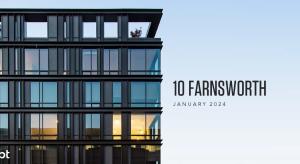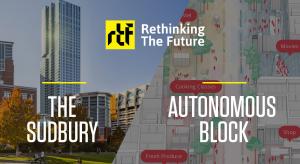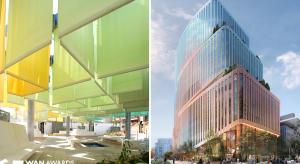
Planning for Inclusivity in Athletics and Wellness Programs
Creating true inclusivity on campuses will require numerous shifts in pedagogy and accommodations, especially within athletic and wellness programs. Many schools’ athletics facilities have long remained unchanged and require closer examination as programming expands to become more equitable and inclusive.
What changes can we make to welcome and support all students wanting to participate in and enjoy athletics and fitness?
Through thoughtful collaboration with our clients, we have compiled several planning approaches for inclusive wellness programs and the physical infrastructure that supports them. From programmatic layouts building-wide, to prototypes for changing and team rooms, here are some key focus areas for designers and school leadership to consider, as well as applicable solutions to make the academic experience welcoming and safe for all.
Circulation & Accessibility
- Establish clear circulation paths for both students and visitors to create a welcoming facility that can be easily navigated by all, and that optimizes adult supervision.
- Use transparency/visibility and clear wayfinding, which are important for visitors to feel welcomed into facilities for performances, games, and visits.
- Locate all locker rooms, flexible team rooms, training space, and equipment distribution areas along major circulation paths, promoting equal access to all services in a clear and accessible layout.
Privacy & Inclusion
- Team rooms, locker rooms, and restrooms often present a difficult design challenge – how can schools strike the right balance between providing the necessary privacy for students while including appropriate supervision? How can schools provide non-binary solutions for their facilities that do not separate or “other” inclusive design?
- The following locker room and restroom solutions offer inclusivity in many ways: they allow for privacy, medical, religious, and hygiene product needs, while being gender neutral and universally accessible.
- Locker Rooms: The best practice is to introduce at least a pair of single-user, inclusive, and non-gendered locker rooms that are accessible from the same main corridor as any gendered locker rooms.
- Restrooms: The best practice is to use pairs of single-user restrooms instead of multi-stall designs, i.e. a private sink and toilet included within one room with a full height door.
Team Rooms & Gathering Spaces
- Removing individual sport “ownership” of team meeting rooms can reduce the unwelcoming nature inherent in exclusive use spaces. However, “helmet” sports – football, lacrosse, hockey, etc. – have historically needed dedicated team rooms based on the size and nature of their equipment. How do you solve this?
- Create flexible and shared team rooms, that are not dedicated to a specific sport. This allows these rooms to focus more on teaching, collaboration, and gathering, rather than on changing clothes. This also can reduce the number of spaces needed and increase the utilization of each room.
- What about accommodating equipment?
- Increase the size of the locker room to accommodate lockers at a variety of scales – from a 12” fitness style locker up to a 36” helmet sport locker – promoting a “one school” culture where every student uses the same locker room.
Community Building Opportunities
- Creating an inclusive facility for athletics and wellness means accommodating students and faculty of all abilities and identities in one community. Thoughtful spatial design can balance the inherent competitiveness of team sports with a unified experience for all.
- True inclusivity expands athletics facilities to accommodate a broader group of sports, facility users, and user abilities, ensuring everyone is given an equitable place in the design of your facility. Examples might include introducing courts for varsity through club teams, offering fitness equipment access for beginner through advanced users, and providing facilities for “lower-barrier to entry” sports like track, cross-country, crew, squash, fitness, or yoga.
These ideas are part of a larger thought piece on this topic presented in collaboration with Middlesex School at the TABS (The Association of Boarding Schools) Conference.
CONTEXT is CBT’s ongoing blog series of innovative design thinking, always responding to the changing world around us and our role as creators within it.


